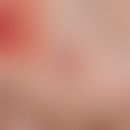Synonym(s)
Codiaeum variegatum; Croton wonder bush; Garden spurge; Garden spurge milk; Ingenol; Ingenolmebutate; Ingenol Mebutate; Peplin
DefinitionThis section has been translated automatically.
Herbaceous plants growing up to 1 m high with red, yellow and green patterned leaves, which can also vary in shape, from the Euphorbiaceae(spurge) family. The plant produces a milky, cloudy, poisonous sap that quickly oxidizes into a rubbery film (latex). It also produces round capsule fruits. Flowering time: July to October, fruit ripening: September to October.
OccurrenceThis section has been translated automatically.
Originally from Southeast Asia (Indonesia, Polynesia, Malaysian Archipelago), introduced to Europe about 180 years ago. Today, it is planted in many tropical gardens all over the world and is one of the most popular indoor pot plants in many households, not only in Europe but also in the USA. More than 100 varieties are on sale, some of which even bear such well-known names as "Tsar Alexander III" or "Baron de Rothschild".
You might also be interested in
Field of application/useThis section has been translated automatically.
- The milky sap, raw or boiled, is used as a laxative, abortifacient, diaphoretic and cough remedy.
- The milky sap of the garden spurge (Euphorbia peplus) has been used for centuries to treat warts. In a larger study (222 patients), the clinical efficacy of peplin (active ingredient ingenol mebutate) extracted from the sap of the spurge was demonstrated (ingenol mebutate gel 0.025-0.05%, Picato® Gel). Treatment was carried out over 3 days. The pathogenetic principle of this form of therapy is still unknown. Picato® Gel has no longer been approved in the EU since 2020.
- Ingenol mebutate, an active ingredient from garden spurge, was available for the treatment of actinic keratoses, approved by the EMA and BfArM in 2012 and authorized as ingenol mebutate-containing gel (Picato®Gel) for external use in actinic keratoses . In 2020, the approval was withdrawn by the EMA and BfArM due to a possible induction of squamous cell carcinoma in the treated area: The Committee for Medicinal Products for Human Use (CHMP) of the European Medicines Agency (EMA) concluded its review of Picato® with the result that the medicinal product may increase the risk of skin cancer and that the risks outweigh the benefits.
Limited indicationThis section has been translated automatically.
Verrucae vulgares, actinic keratoses. see under ingenol mebutate, approval suspended since January 2020 for the preparation Picato®
DosageThis section has been translated automatically.
Ingenol Mebutate Gel: 0.025 - 0.05%
Undesirable effectsThis section has been translated automatically.
- Toxic parts of the plant: latex, bark, roots. The latex of most Euphorbiaceae is primarily irritating to the skin and mucous membranes.
- The terpenes and phorbol esters, which are widespread in this family and have a particularly strong irritant effect, are responsible for this. In addition, they have a proven co-carcinogenic effect.
- Sensitizing potency: Medium. Frequency of sensitization: Rare.
In case of ingestion: Irritation of the oropharynx, gastroenteric irritation with diarrhea.
In case of eye contact: Keratoconjunctivitis, possibly uveitis, possibly permanent damage to eyesight.
LiteratureThis section has been translated automatically.
- Anderson L et al. (2009) Randomized, double-blind, double-dummy, vehicle-controlled study of ingenol mebutate gel 0.025% and 0.05% for actinic keratosis. J Am Acad Dermatol 60:934-43.
- Cateni F et al. (2003) Terpenoids and glycolipids from euphorbiaceae. Mini Rev Med Chem 3: 425-437
- Hausen BM, Vieluf K (1997) Allergy plants, plant allergens. Ecomed Verlag, Landsberg/Munich
- Montag A (2023) Plants and skin. Springer-Verlag GmbH. S. 1003-1005.
- https://www.bfarm.de/SharedDocs/Risikoinformationen/Pharmakovigilanz/DE/RV_STP/m-r/picato.html




